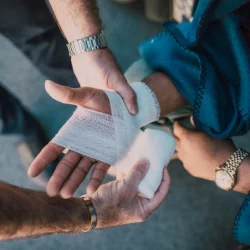Personal Injury Law: Factors for Determining Legal Responsibility
Personal injuries can be devastating, especially when they lead to lost income or tremendous medical bills. When the injured party doesn't believe that he is at fault for the accident that caused the injury, he can initiate a personal injury lawsuit. When the court system is determining who is at fault for the injury, several key questions are asked. Depending on the answers, the injured party may be able to collect a substantial amount of money in damages. On the other hand, if the injured party is even partly liable, the amount of money that he can collect will be limited. Here are some of the ways attorneys and judges determine who is liable for a personal injury.
Where Did the Incident Take Place?
If the person who was injured was in a place where he was not supposed to be -- such as trespassing on another person's property or ignoring "Do Not Enter" signs -- then he will probably be held liable for his own accident. Similarly, if the accident takes place in a location where the accident should have been seen as a reasonable possibility, then the person who caused the accident might not be held liable. For instance, if the injured person participated in extreme sports, the instructor who was involved in the accident wouldn't necessarily be liable.
Was Either Party Careless?
If the injured person was somewhat careless when the accident took place, the amount of damages he can collect is reduced. Known as comparative negligence, careless behavior on the part of the injured person makes him partly liable and therefore financially responsible for the expenses related to the accident. The plaintiff's injury lawyers will work with the courts to determine the extent to which the injured person's actions contributed to his own accident. On the other hand, if a building is poorly maintained, then the owner could be considered careless and held completely liable for accidents that take place as long as the injured party took reasonable precautions to avoid injury.
Was it a Work Related Injury?
If someone is injured while completing work for someone else, either as an employee or a contracted worker, then the employer may be legally responsible for the accident. Employers must maintain a safe work environment at all times, such as keeping floors dry or marking wet floors, and keeping all tripping hazards clear of walking paths. Proper safety equipment or clothing must also be supplied to avoid accident liability.
Personal injury cases can be complex. The liability for a personal injury accident is determined by a number of factors, not the least of which is the care taken by the injured party. In order to avoid liability in personal injury cases, people must respect signage that tells them about restricted areas and use equipment for its intended purpose. If one trespasses onto property or uses equipment for an unintended purpose he may find himself unable to be financially compensated for the expenses he incurs after the accident.
Jeremy S enjoys helping people understand law. He often blogs about his research and insights to assist people in making smart choices in difficult circumstances.
More to Read:
Previous Posts:




